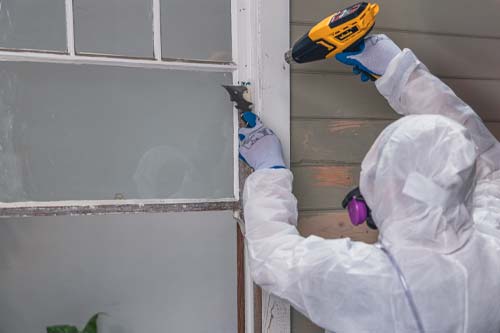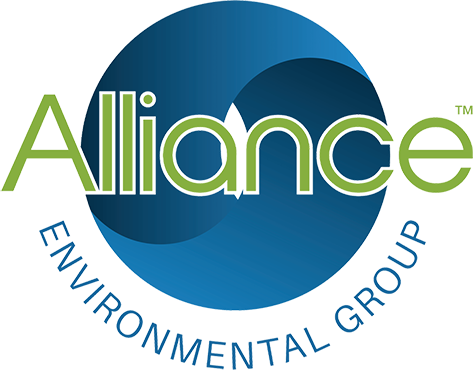Ensuring Safety & Compliance
Dive into the critical world of fire life safety with Matthew Henry, our Director of Operations for Indoor Air Quality (IAQ), as he presents a concise overview of Alliance Environmental’s specialized services. In this video, Matthew shares expert knowledge on how we safeguard environments and ensure compliance with the latest standards, helping to protect what matters most. Learn about our comprehensive approach to fire life safety and how our dedicated team works to deliver peace of mind in every operation. Watch now and discover the Alliance advantage in fire life safety solutions.
Our Certifications
Protect Your Building and Its Occupants
As a responsible building owner or facility manager, the safety of your building and its occupants should always be your top priority. A fire outbreak can lead to significant damage to your property and even loss of life. At Alliance Environmental, we provide comprehensive fire damper testing and installation services to ensure your building is fully protected.
Fire dampers are passive fire protection systems installed in heating, ventilation, and air conditioning (HVAC) ducts, and they work by sealing off the duct when they detect heat. These systems limit flame spread and are vital for mitigating the impact of a fire, so they must be tested regularly to ensure they are operational.
Our team of experts is wholly dedicated to ensuring compliance with National Fire Protection Association (NFPA) code 80, which sets the standards for fire dampers and fire doors. Per this mandate, fire dampers must be tested and inspected one year after installation and then every four years after, or every six years after if they are in a hospital. Backed by extensive training and experience, our professionals utilize a state-of-the-art reporting system to guarantee optimal functionality, adherence to codes, and even secure a favorable Joint Commission inspection.
Our professionals are dedicated to providing top-notch inspections, repairs, and replacements to safeguard your building from fire hazards. Trust us to protect your occupants and assets with our fire damper inspection services.
Resources For You


Why Do You Need Fire Damper Testing?


Our Fire Damper Inspection and Repair Services
The Alliance Environmental team is familiar with many types of fire safety systems, and we have extensive experience providing fire damper testing services in commercial structures. We offer the following tests to verify that your installation complies with NFPA standards:
- Operational testing: Immediately after installation, this test verifies that the damper closes completely, is easy to access, and is able to operate without obstruction. All indicating devices must be operational and reporting as intended. For dynamic damper models with a velocity rating, the velocity in the duct must match that number. If the unit has a fusible link — a setting that allows a user to set the target activation temperature — it must be of the correct rating and temperature classification.
- Acceptance testing: This test takes place after installation but before the unit is considered to be in service. It confirms that the damper is in serviceable condition and opens and closes correctly when triggered. This test is performed after HVAC system balancing.
- Periodic testing: Periodic testing describes the ongoing evaluations performed one year after installation and then on a four- or six-year schedule depending on the facility type. At this time, the testing professional will visually confirm that the fire shutter actuates as intended and is capable of achieving a complete seal before returning to its fully open position.
The professionals at Alliance Environmental have the expertise and resources necessary to test your fire dampers and ensure they are ready to deploy the moment they detect a fire in your structure. Contact us for everything from initial installation to thorough repair to ongoing evaluation to ensure your fire dampers meet all NFPA standards.
Our Environmental Services

Asbestos Abatement
Alliance is a licensed asbestos removal company. Our crews adhere to stringent setup, decontamination, and disposal procedures in line with all regulations.

Lead Abatement
As a lead abatement certified contractor, Alliance follows strict procedures to minimize, control and contain lead dust during removal, site decontamination and lawful disposal of the material.

Mold Remediation
Alliance Environmental can identify the source of mold in your property and implement a plan to safely remove it. Our team is trained in the latest mold remediation techniques to ensure that your property is safe and healthy.

Biohazard Decontamination
At Alliance Environmental, we are committed to providing the highest quality of service when it comes to hazardous material cleanup and waste removal.

Heat Treatment
Heat treatment is a non-chemical pest control method that uses high temperatures to eliminate pests such as bed bugs, termites, and cockroaches.

Contents (Total Loss Inventory)
In the event of asbestos contamination in your business, it’s crucial to have a trained team to catalog and contain the hazardous materials. At Alliance Environmental, we can provide expert assistance in creating a total loss inventory by constructing containment areas and utilizing proper safety equipment to safely record and dispose of all contaminated objects.
Frequently Asked Questions
What are fire life safety services?
Fire life safety services are a range of services designed to protect people and property from the risk of fire. These services include fire risk assessments, fire suppression systems, fire alarm systems, emergency lighting, and evacuation plans.
Why are fire life safety services important for commercial buildings?
Commercial buildings are required by law to have adequate fire protection systems and emergency procedures in place to protect employees, customers, and visitors. Fire life safety services help ensure that these systems and procedures are in place and functioning properly to prevent or minimize damage and injury in the event of a fire.
What is involved in a fire risk assessment?
A fire risk assessment is an evaluation of a building’s fire hazards, potential risks, and current fire protection systems. The assessment identifies potential fire hazards and recommends measures to minimize or eliminate the risks, such as the installation of fire alarms, sprinkler systems, or emergency lighting.
What is a fire suppression system and how does it work?
A fire suppression system is a system designed to detect and extinguish fires automatically. It includes a network of pipes, nozzles, and sensors that are connected to a water supply or other extinguishing agent. When a fire is detected, the system releases the extinguishing agent to suppress the fire.
Contact Us
If you have a residential demolition or site clearing project, don’t hesitate to contact us for a consultation. We would be happy to provide you with a quote and discuss how we can help bring your project to fruition.


